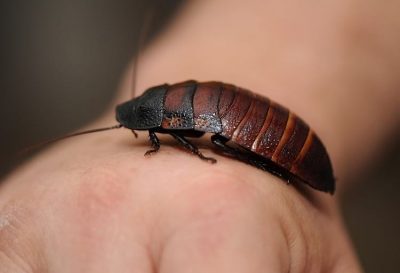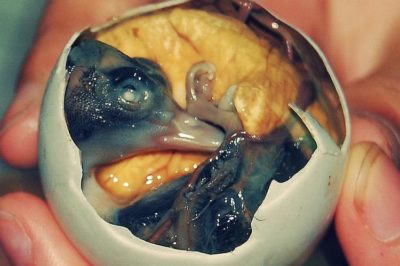Victor of Aveyron – The Feral Boy from France
Share

Artwork of Victor of Aveyron. (Gallica Digital Library)
Victor of Aveyron was a feral child discovered in the environs of Saint-Sernin-sur-Rance. While he attracted a lot of public attention at the time, attempts to civilize and integrate him into French society were not successful.
Discovering Victor of Aveyron
In 1794, the woodmen of Aveyron in France noticed a strange boy in the woods near Saint-Sernin-sur-Rance. He wore a ragged shirt and appeared to behave more like a wild animal than a human being, walking on all fours and foraging for food on the ground. The woodmen weren’t able to get near him, but saw him on several occasions during the next four years. In January 1800, they were able to capture him—or he approached them; there are conflicting stories about that—and found him to be completely feral and unaccustomed to being around human beings.
He appeared to be around 12 or 15 years old. Incapable of speech, he could only produce animal-like sounds, and, at first, he also seemed to be deaf. There was no way of knowing who he was or for how long he had been alone in the woods. There was some speculation that he might have been an illegitimate child and that his parents or caretakers had abandoned him on account of his obvious cognitive disabilities.
The authorities in Aveyron placed him in an orphanage and he sparked a great deal of public interest, but it was not easy to care for him. Dubbed the Wolf Child, he disliked being forced to wear clothes and tore them off at every opportunity. Pierre Joseph Bonnaterre, a naturalist, observed his behaviour and noticed that his mood brightened in sunlight. Also, when it snowed, he ran outdoors, tore off his clothes, rolled naked in the snow, and ate it by the handfuls. He appeared to be completely impervious to the cold, and also to the presence of humans, unless they had anything he could eat.
Attempts to rehabilitate Victor
After a few weeks in Aveyron, the authorities decided it might be better for the boy if they sent him to the National Institute of the Deaf in Paris. Although he wasn’t deaf, the experts there might be better able to care for him. There was much public debate at the time about whether it was morally right to try and civilize the boy or let him remain as he was.
At the Institute, the renowned instructor Abbé Roch-Ambroise Cucurron Sicard attempted and failed to instruct the feral boy in even the rudimentary social behaviours. The boy showed no sign of understanding anything he was taught and lacked all reasoning capacity. Doctors examined the boy and found that, while he was healthy and wasn’t deaf, he had faulty eyesight. Moreover, they discovered that he had poor coordination and showed signs of being severely mentally retarded. Declaring the boy to be a congenital idiot, Abbé Sicard washed his hands off him and allowed him to roam unhindered on the Institute’s grounds.
Victor of Aveyron and Itard
A medical student named Jean-Marc Itard took an interest in the young boy and decided to try and help him. He took him into his house, named him Victor, and appointed a woman named Madame Guerin to care for him.
Working tirelessly together, Itard and Madame Guerin attempted to socialize Victor by monitoring his daily activities for the next six years. It was an uphill task. As Itard discovered, Victor could not even differentiate between hot and cold sensations. Just as he rolled in snow without feeling the cold, he could dip his hand in boiling water without flinching to scoop out potatoes.
Itard and Madame Guerin had to use sensory stimulation training to make Victor understand the differences between hot and cold as well as the differences between wet and dry. They also accustomed him to wearing clothes, to eat with a spoon, and to being around people.
Once, to socialize Victor, Itard took him to a dinner gathering at a leading socialite’s home. The party was packed with people eager to see the feral boy, and he more than lived up to their expectations. After stuffing himself at the table and filling his pockets with the delicacies, he slipped away into the garden. Itard and the other noticed his absence only after they heard excited shrieks from the garden.
Running out there, they saw that Victor had shed most of his clothes and was speeding about happily across the lawns. As they watched, he ripped off the last remnant of clothing and clambered up a tree. He then proceeded to leap from tree to tree and ignored all the efforts of the scandalized guests to bring him down. He only came down after a quick-thinking gardener brought out a basket of peaches to tempt him.
Through repeated and patient attempts, however, Victor began to be more sociable around people. He began helping Madame Guerin with tasks around the house. He also showed empathy when her husband died; when he came across her weeping, he attempted to console her.
Along with socializing him, Itard attempted to teach Victor to speak, read, and write. There was a limited success here as well. Victor learned to speak only three works—eau (water), lait (milk), and O Dieu (Oh, God)—but did much better with recognizing shapes and letters. He also began to comprehend gestures, and might have benefited from learning sign language; strangely, Itard did not attempt to teach him that.
Victor’s progress remained limited and Itard attempted to speed things up by subjecting him to electric shocks; it was an accepted form of treatment at the time. Unfortunately, far from improving, Victor became prone to flying into sudden rages and also began to show signs of developing epilepsy.
Coming to the conclusion that there was nothing much he could do to teach Victor, Itard stopped the treatments and the teaching sessions. Leaving him in Madame Guerin’s care, he moved on to work on other research projects. Victor lived with Madame Guerin until his death in 1828. He was 40 years old and had made no further developmental progress.
The idea of the noble savage
In the 18th century, many Europeans thinkers and philosophers began to examine and question the concept of civilization. For various reasons, they assumed that human beings were better off living untrammelled in nature than in the confinements of urban areas. They thought that primitive tribes had fewer social problems and were morally superior to civilized people. The idea of the noble savage captured the public imagination. According to this line of thought, people were born with inherently noble qualities, but it was the nurture they received that led to their moral downfall.
The case of Victor of Aveyron put a spanner in this notion. There was nothing noble about Victor. He was more to be pitied than taken as an emulative example. Most feral children, like Victor and Dina Sanichar from India, grew up neglected and isolated, and miss a critical period of language development that can never be recouped. As they can never overcome their severe developmental issues, these children can never fully integrate into society and few of them live out their full lifespans.
Enjoyed this article? Also, check out “Mowgli was Real: Dina Sanichar, the Indian Boy Raised by Wolves“.
Fact Analysis:
STSTW Media strives to deliver accurate information through careful research. However, things can go wrong. If you find the above article inaccurate or biased, please let us know at [email protected]













